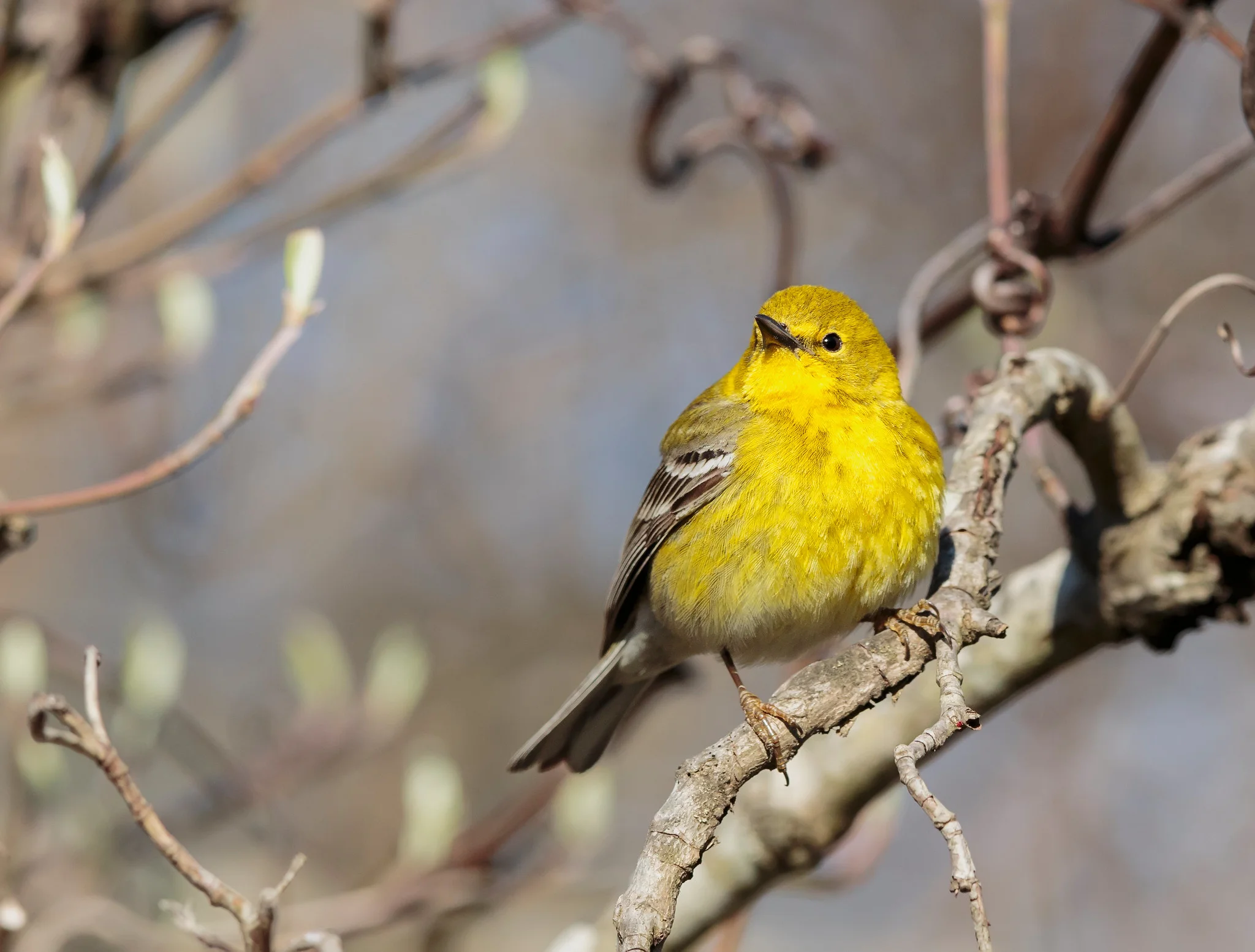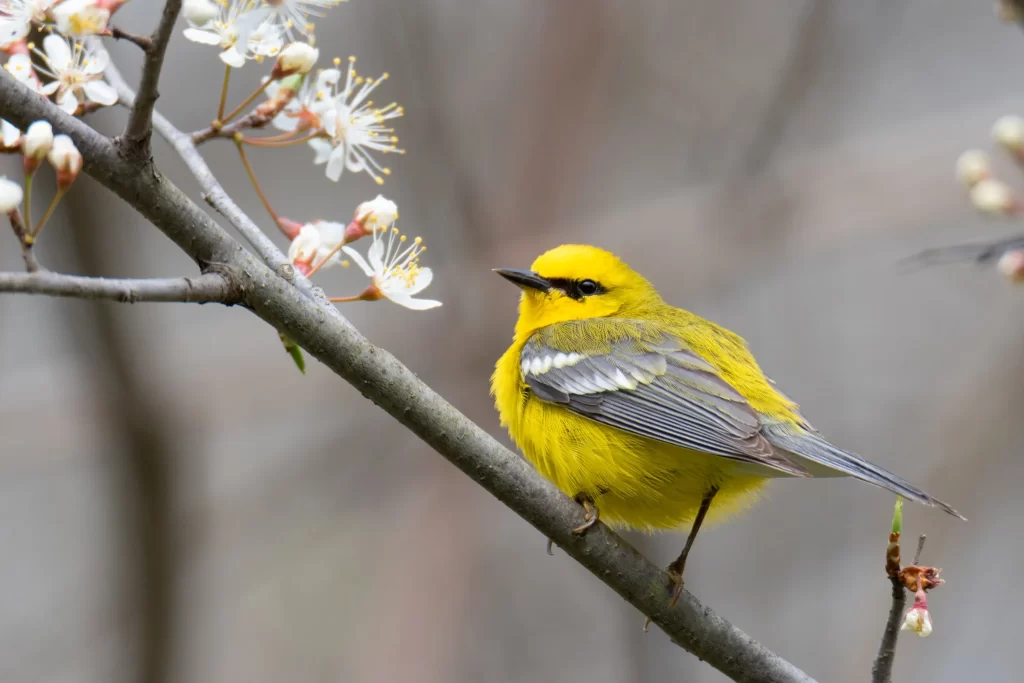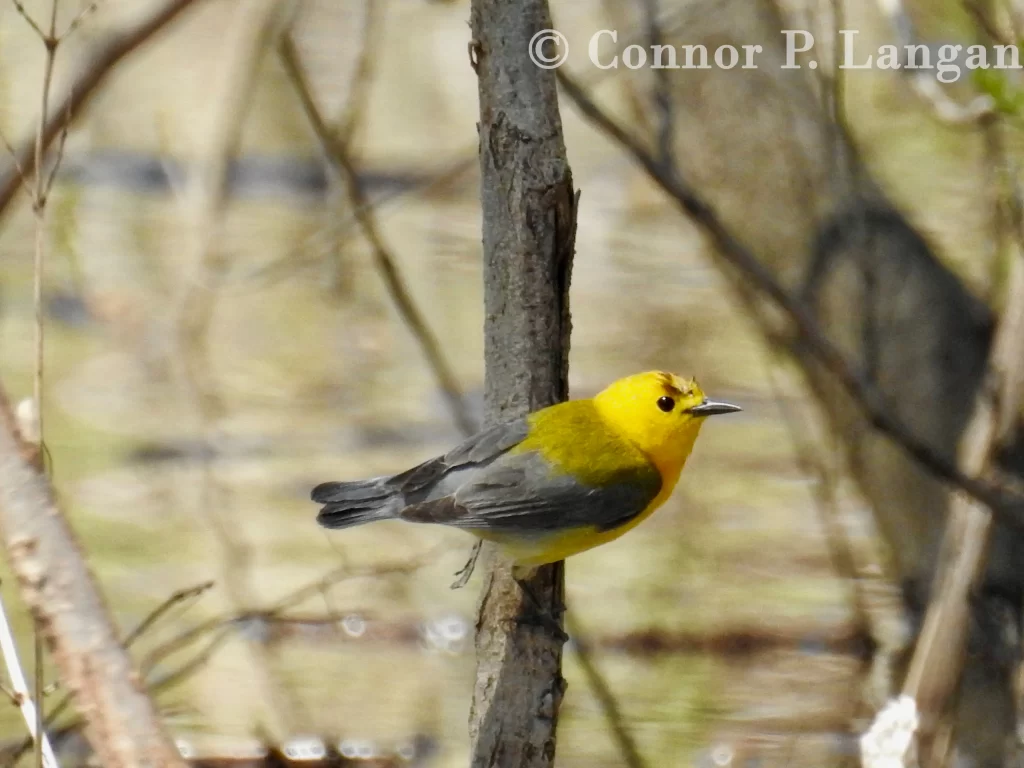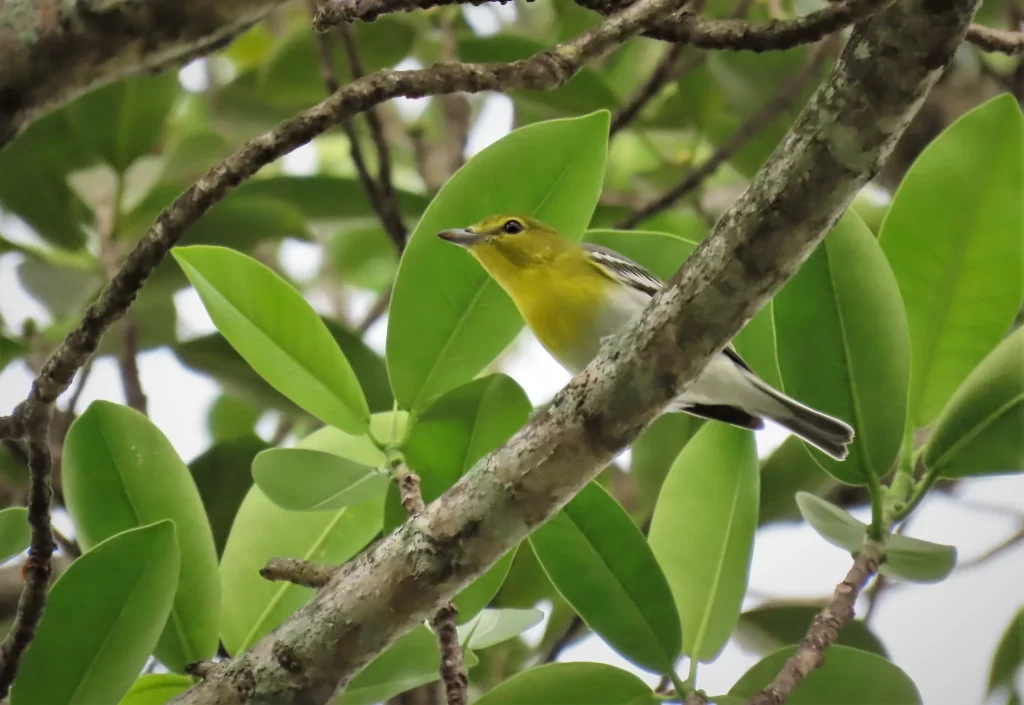Description
Pine Warblers are sizable birds with lengthy tails and large beaks.
These birds measure up to 5.5 inches long, and they may weigh between 0.3 to 0.5 pounds.
Male Pine Warblers have yellow throats and yellow-green chests, stomachs, backs, and heads. Prominent yellow eyerings can be observed in males, while blue-gray wings with two white wingbars are also diagnostic. The lower part of a male Pine Warbler’s stomach and its undertail coverts are white.
Female Pine Warblers look similar to males, though they often have more white on their undersides. Females have gray-green backs rather than yellow-green backs.
Immature Pine Warblers can exhibit a range of different colors. Some immature female birds may be almost entirely gray, while other immature birds may be a pale green color.
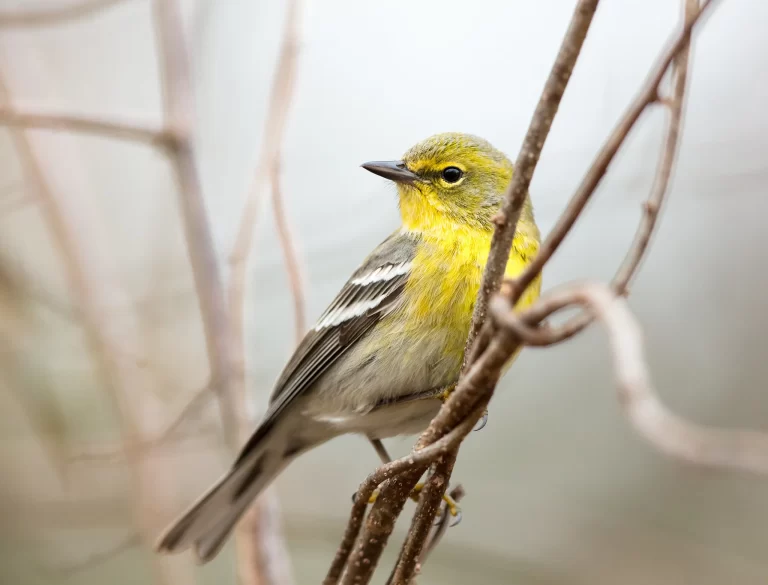
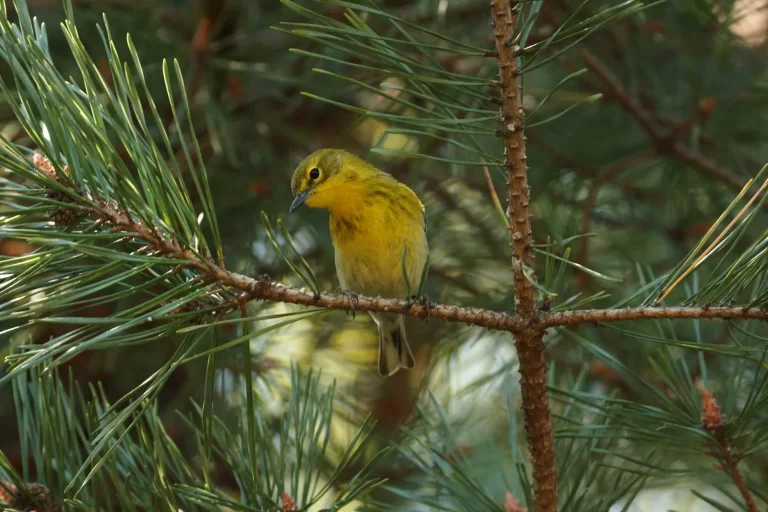
Behavior
Pine Warblers—especially male birds—tend to be very territorial, as they frequently drive away intruding birds. In the nonbreeding seasons, this species will readily join mixed-species feeding groups.
Pine Warbler Diet
Insects are the main source of food for these birds. However, this species may also eat fruits and seeds such as pine nuts.
Habitat
Pine Warblers live up to their namesake, as they favor woodlands that are predominantly pine or mixed pine-deciduous woodlands. While some warblers favor specific types of conifers, this species seems to be pretty indifferent about the type of pine trees in which they survive-as long as a tree has needles, Pine Warblers seem to be content.
Look for Pine Warblers in pine trees during migration. If you live in an area that has few pines, this species may be found in deciduous trees if presented with no other options.
Range
Pine Warblers are short to medium-distance migrants unlike many of their warbler counterparts. This species can be found year-round in the American Southeast, the Bahamas, the Dominican Republic, and Haiti. During the summer, Pine Warblers also breed throughout much of the eastern United States and southeastern Canada.
Breeding
Pine Warblers are monogamous by nature. Females construct their nests in pine trees, usually high in trees where they blend into the surroundings.
Females build cup-shaped nests out of grass, pine needles, twigs, and plant fibers. Spider webs are added to the exterior of a nest to reinforce the nest’s strength. Females add hair, feathers, and other soft materials to the interior of a nest to make it softer.
It takes about two weeks for a female to complete the construction of a nest. A female’s partner will supervise her as she collects materials for the nest, and he may assist the female at times.
Pine Warblers raise between 1 to 2 broods of young each year, with each clutch containing 3 to 5 eggs. It takes just over 10 days for the eggs to hatch, and it takes 10 more days for the young to leave the nest.
Backyard Birding
Pine Warblers are among the few species of warblers that can be expected to visit a backyard to eat from a bird feeder. While it is not likely that these birds will consume seeds from a tube feeder, these warblers will eat off of a suet feeder.
Pine Warblers do not nest in birdhouses, but they may nest near your yard if you live adjacent to pine trees.
Pine Warbler Population Status
Pine Warblers have a population of over 13 million. They are one of the few warblers who have experienced population gains in the past few decades.
Pine Warbler Facts
- Pine Warblers and Yellow-throated Warblers overlap in pine forests on the East Coast. During interactions, Pine Warblers are usually the dominant species between the two.
- Pine Warblers are closely related to Yellow-rumped Warblers.
- Pine Warblers consume more seeds than any other warbler species.

